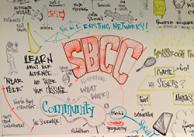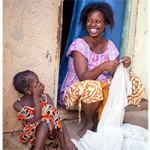What is Urban, Who are Youth, and What Works?
 In a recent HC3 forum where health professionals from across the country gathered to exchange insights into promising urban youth reproductive health programs, the most compelling conversations revolved around surprisingly rudimentary topics: what is urban and who are youth? One of the most rapidly rising populations, urban youth are perhaps the most dynamic and often overlooked targets in public health.
In a recent HC3 forum where health professionals from across the country gathered to exchange insights into promising urban youth reproductive health programs, the most compelling conversations revolved around surprisingly rudimentary topics: what is urban and who are youth? One of the most rapidly rising populations, urban youth are perhaps the most dynamic and often overlooked targets in public health.
The goal of the Urban Youth Sexual Reproductive Health and SBCC Evidence Exchange: What Works? forum in Washington, DC, October 16 was to review and explore promising approaches as well as identify gaps in using social and behavior change communication to reach urban youth related to sexual and reproductive health.
Throughout the morning, participants identified the key determinants of urban youth reproductive health and specific factors to consider in the urban setting. However, the “urban” setting can range from large metropolitan cities and slums, to semi-urban and peri-urban areas, to small town centers. Each of these settings has a unique set of influencing factors, such as population size, poverty level, composition and strength of social groups, and population awareness of and access to services. Similarly, factors such as gender, religion, marital status and reproductive health history are often much more descriptive than age when distinguishing a “youth” population.
To explore what is working in SBCC programming, experts from PSI, Pathfinder, NURHI, Grassroots Project and B’more for Healthy Babies highlighted a handful of promising urban youth reproductive health programs. Despite using very different criteria for “urban” and “youth,” a common factor in each program’s success was a thorough situation analysis and inclusion of the youth in every step of the process.
In the afternoon, participants worked in groups to first identify existing tools and resources that could be used to build capacity in SBCC programming for urban youth and then assess the current gaps and make a wish list of desired tools and resources. All groups agreed that the lack of a global standard definition of urban or youth impedes the development of a solid evidence base, which makes the unanimous wish for an evidence-based toolkit or implementation guide seem like an impossible dream.
A primary goal for HC3 is to better understand the effects of dynamic urban environments on the complex population of urban youth in order to develop such a guide. “We have an incredibly challenging, incredibly interesting, and incredibly dynamic task ahead of us,” said HC3 Project Director Kirsten Böse. The forum was a valuable opportunity to gain insight and will provide a solid foundation for HC3 to clarify what is urban, who are youth, and what works in social behavior change communication.







Leave a Reply
Want to join the discussion?Feel free to contribute!